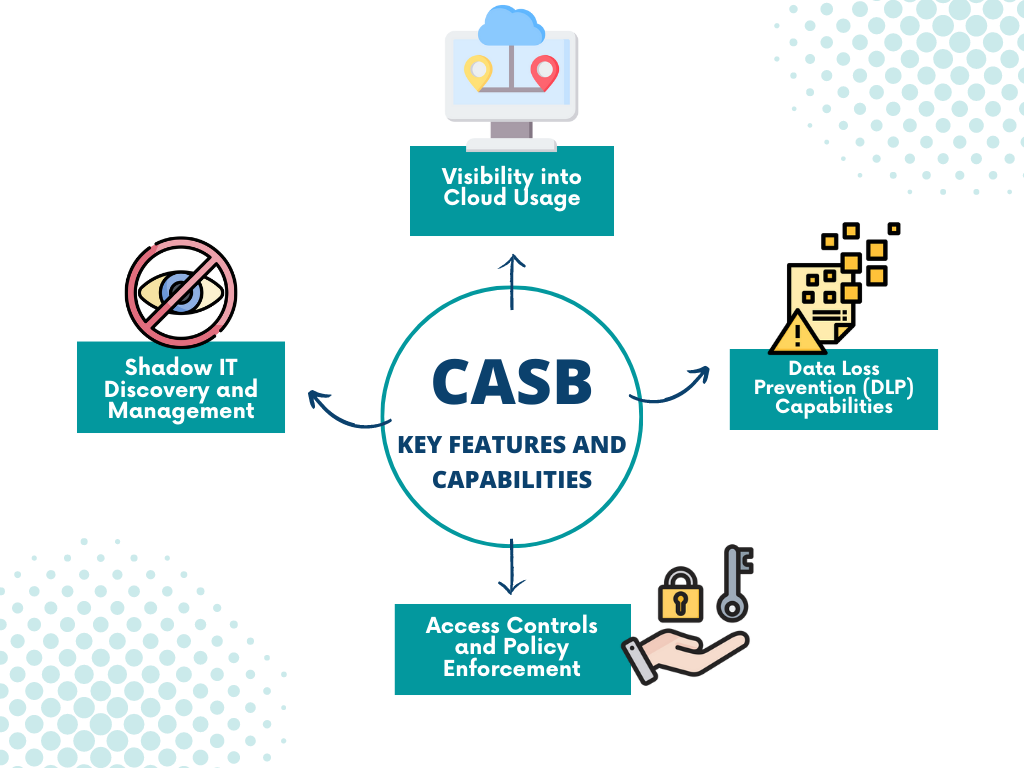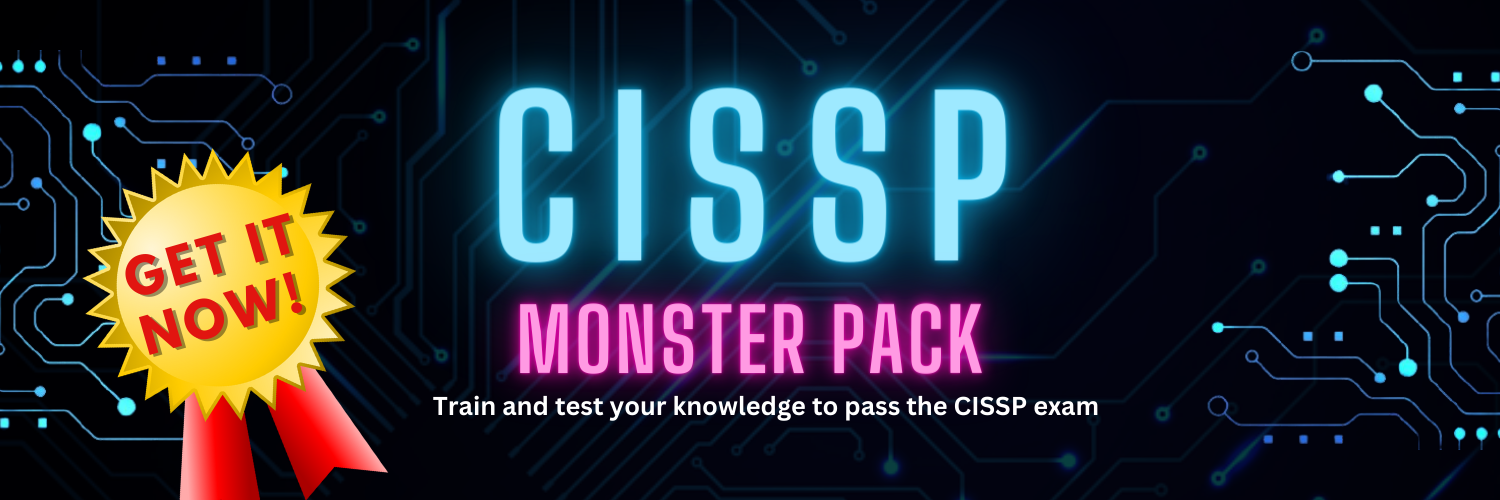In an era marked by digital transformation and cloud-first strategies, ensuring the security of sensitive data and maintaining regulatory compliance has become paramount for organizations across the globe. As businesses adopt cloud services and remote work models, new challenges and opportunities arise in the realm of cybersecurity.
Two prominent solutions that have emerged to address these challenges are Cloud Access Security Brokers (CASB) and Secure Access Service Edge (SASE). While both serve the purpose of enhancing cloud security, they possess distinct features and functionalities that cater to varying organizational needs.
Understanding CASB (Cloud Access Security Broker)
A Cloud Access Security Broker (CASB) is a specialized security solution that acts as an intermediary between an organization’s on-premises infrastructure and the various cloud services and applications it utilizes. CASB serves as a security control point, providing a layer of protection and oversight for data and activities in cloud environments.
The primary goal of CASB is to enable organizations to extend their security policies and controls into the cloud, ensuring that sensitive data remains secure, compliant with regulations, and in line with the organization’s overall security posture.

CASB solutions are designed to address the challenges associated with the rapid adoption of cloud services, including the lack of visibility, control, and security measures over data that resides in cloud applications. By offering a comprehensive set of functionalities, CASB empowers organizations to gain insights into their cloud usage, implement security policies, and enforce access controls to mitigate risks associated with unauthorized access, data leakage, and potential breaches.
Key aspects of CASB functionality include granular visibility into cloud usage, data loss prevention (DLP) capabilities, access controls, and the discovery and management of shadow IT resources. By providing these capabilities, CASB solutions play a pivotal role in safeguarding data integrity, confidentiality, and availability, all while enabling organizations to fully harness the benefits of cloud technology.
Primary Functions: Visibility, Control, and Security Enforcement
At the core of a Cloud Access Security Broker (CASB) lies a triad of primary functions that collectively fortify an organization’s cloud security strategy. These functions—visibility, control, and security enforcement—enable businesses to confidently navigate the complexities of cloud environments while safeguarding sensitive data and maintaining regulatory compliance.
Key Features and Capabilities

1. Granular Visibility into Cloud Usage: CASB solutions offer unparalleled insights into the usage patterns, activities, and behaviors occurring within cloud applications and services. By providing detailed visibility into user interactions, data sharing, and application usage, organizations gain a comprehensive understanding of their cloud landscape. This visibility helps identify potential security gaps, anomalies, and deviations from established norms, allowing for proactive risk mitigation and informed decision-making.
2. Data Loss Prevention (DLP) Capabilities: One of the paramount concerns in the cloud era is preventing the inadvertent or malicious exposure of sensitive data. CASB solutions incorporate robust data loss prevention mechanisms that monitor data transfers, sharing, and storage in cloud environments. These mechanisms employ advanced data classification, content inspection, and policy enforcement to identify and prevent unauthorized data movement. DLP capabilities extend across a spectrum of data formats, ensuring protection for text, images, files, and more.
3. Access Controls and Policy Enforcement: CASB platforms empower organizations to enforce consistent access controls and security policies across diverse cloud applications and services. Through user authentication, authorization mechanisms, and contextual attributes, CASB solutions enable the application of granular access controls. This ensures that users have the appropriate level of access based on their roles and responsibilities, reducing the risk of data exposure and unauthorized activities.
4. Shadow IT Discovery and Management: The proliferation of shadow IT—unsanctioned and often unmonitored cloud applications—poses significant security challenges. CASB solutions excel in the identification and management of shadow IT by scanning network traffic and discovering unauthorized applications in use. Once identified, organizations can assess the security posture of these applications, determine whether they align with compliance requirements, and take appropriate measures to either secure or restrict their usage.
CASB Use Cases
1. Protecting Data in Cloud Applications: CASB solutions play a pivotal role in safeguarding sensitive data stored within various cloud applications. As organizations increasingly rely on cloud-based productivity tools, collaboration platforms, and storage services, the risk of data exposure and unauthorized access grows. CASB platforms provide data-centric security by monitoring data at rest and in transit, applying encryption, and ensuring proper authentication mechanisms. This use case is particularly critical for industries handling proprietary information, customer data, financial records, and intellectual property.
2. Enforcing Security Policies Across Cloud Services: Maintaining consistent security policies across a diverse array of cloud services can be a challenging endeavor. CASB solutions act as a unified control point, enabling organizations to implement and enforce security policies consistently across different cloud applications. Whether it’s enforcing multi-factor authentication, restricting certain actions based on user roles, or monitoring for risky behaviors, CASB ensures that security protocols remain intact regardless of the chosen cloud service.
3. Ensuring Compliance with Regulations (GDPR, HIPAA, etc.): Regulatory compliance is a paramount concern across industries, especially in sectors dealing with sensitive personal and medical data. CASB solutions provide the necessary tools to align cloud activities with regulatory requirements such as the General Data Protection Regulation (GDPR), Health Insurance Portability and Accountability Act (HIPAA), and others. CASB’s ability to monitor data flows, enforce encryption, and audit activities assists organizations in demonstrating adherence to these stringent regulations, thereby mitigating legal and reputational risks.
CASB Benefits and Limitations
Advantages of CASB Solutions:
- Enhanced Cloud Visibility: CASB solutions provide organizations with unparalleled insights into their cloud environment. This visibility aids in identifying potential security gaps, shadow IT usage, and unauthorized activities.
- Data Protection and DLP: With robust data loss prevention mechanisms, CASB ensures that sensitive data remains secure by preventing unauthorized data movement and ensuring compliance with data protection regulations.
- Consistent Policy Enforcement: CASB platforms enable organizations to enforce uniform security policies across a diverse range of cloud applications, ensuring a cohesive security posture.
- Rapid Threat Detection: Real-time monitoring and anomaly detection capabilities allow CASB to swiftly identify and respond to potential security threats and breaches, minimizing their impact.
- Regulatory Compliance: CASB helps organizations navigate complex regulatory landscapes by ensuring that cloud activities adhere to relevant compliance frameworks, avoiding potential fines and legal repercussions.
Challenges and Limitations:
- Deployment Complexity: Implementing CASB solutions can be intricate, requiring integration with existing infrastructure, adapting to diverse cloud environments, and user onboarding.
- Data Privacy Concerns: CASB solutions require access to data in order to monitor and secure it, which may raise concerns related to data privacy and ownership.
- Latency and Performance: Depending on the architecture and deployment model, CASB solutions might introduce latency to network traffic, impacting application performance.
- Integration with Cloud Services: Not all cloud services are compatible with every CASB solution, potentially limiting coverage across an organization’s entire cloud ecosystem.
- Continuous Monitoring Challenges: Monitoring and responding to real-time threats can be demanding, requiring a dedicated security team to ensure effective risk mitigation.
- Cost Considerations: CASB implementation involves costs related to licensing, deployment, training, and ongoing maintenance, which may affect budget allocation.
Exploring SASE (Secure Access Service Edge)
Secure Access Service Edge (SASE) represents a revolutionary paradigm in the realm of cloud security and networking. Coined by Gartner, SASE addresses the evolving demands of a digital landscape characterized by remote work, cloud adoption, and the need for comprehensive security measures. Unlike traditional security models that focus on securing the network perimeter, SASE reimagines security as an intrinsic part of the network itself.
At its core, SASE consolidates security and networking functionalities into a unified framework, delivering security services directly from the cloud. This convergence streamlines and simplifies security architecture while ensuring consistent protection across diverse locations, devices, and applications.
Integration of Network and Security Services:
SASE unifies network and security services, erasing the conventional distinctions between them. Traditionally, network services like WAN optimization and security services such as firewalls were treated as separate entities. SASE merges these services into a single cloud-based platform, facilitating seamless interaction and enhancing overall security efficacy.
This integration is enabled by a series of cloud-native components, each contributing to the holistic SASE framework:
- Secure Connectivity (SD-WAN): Software-Defined Wide Area Network (SD-WAN) forms the foundation of SASE. It optimizes network performance by intelligently routing traffic over multiple paths, ensuring efficient data transmission across remote locations and cloud resources.
- Zero Trust Network Access (ZTNA): SASE embodies the Zero Trust principle, which assumes that no entity, whether inside or outside the organization’s network, can be implicitly trusted. ZTNA ensures that access to resources is granted based on strict authentication and authorization protocols, irrespective of the user’s location.
- Firewall as a Service (FWaaS): Instead of relying on traditional on-premises firewalls, SASE offers Firewall as a Service directly from the cloud. This enables organizations to enforce consistent security policies across all network traffic, including traffic from remote workers and cloud applications.
- Data Loss Prevention (DLP) in the Cloud: SASE extends its protective umbrella to cloud applications and data. By applying DLP mechanisms in the cloud, sensitive information is safeguarded wherever it resides or is accessed.
- Continuous Monitoring and Adaptive Security: SASE operates in real-time, monitoring network activities and adapting security measures to evolving threats. This dynamic approach enhances threat detection and response, reducing the potential impact of security breaches.
Key Attributes of SASE
1. Converged Services Architecture: SASE stands out for its pioneering approach of merging traditionally distinct network and security services into a singular architecture. This convergence eliminates the inefficiencies and complexities associated with managing separate solutions. By integrating services like SD-WAN, firewall, and DLP, SASE ensures a cohesive and streamlined security posture that adapts to the dynamic demands of modern digital environments.
2. Cloud-Native and Scalable Design: SASE is inherently cloud-native, leveraging the agility and scalability of cloud infrastructure. With services hosted in the cloud, organizations can dynamically scale resources in response to fluctuations in demand. This cloud-based nature also minimizes the need for physical hardware, reducing operational overhead and providing a flexible foundation for growth.
3. Identity-Driven Security Approach: Central to SASE’s security philosophy is the concept of identity-driven security. Instead of focusing solely on network perimeters, SASE prioritizes user identities and their associated context. This approach aligns with the Zero Trust principle, ensuring that access is granted based on verified user identities and their specific authorization levels, irrespective of their location or device.
4. Location-Independent Access: SASE facilitates secure access from anywhere, an increasingly vital aspect in today’s remote work landscape. The architecture enables users to connect to corporate resources regardless of their physical location, granting them consistent and secure access to applications and data. This feature empowers organizations to embrace flexible work arrangements without compromising security.
Components of SASE
1. Secure Connectivity (SD-WAN): Secure connectivity forms the foundational component of SASE. Software-Defined Wide Area Network (SD-WAN) optimizes network performance by intelligently routing traffic across multiple paths, ensuring efficient data transmission between remote locations, branch offices, and cloud resources. SD-WAN enhances network reliability, reducing latency and improving overall user experience.
2. Zero Trust Network Access (ZTNA): Zero Trust Network Access (ZTNA) is a cornerstone of SASE’s security approach. Embracing the principle of “never trust, always verify,” ZTNA ensures that access to resources is granted based on strict identity verification and contextual factors, regardless of the user’s location or network. This component minimizes the risk of unauthorized access and lateral movement within the network.
3. Firewall as a Service (FWaaS): Firewall as a Service (FWaaS) shifts traditional firewall functionality to the cloud. This component provides centralized and consistent security policy enforcement across all network traffic, including that originating from remote users and cloud applications. FWaaS enhances threat detection, prevents unauthorized access, and helps maintain a strong security perimeter.
4. Data Loss Prevention (DLP) in the Cloud: SASE extends its protective measures to cloud environments through Data Loss Prevention (DLP). This component monitors and safeguards sensitive data across cloud applications and services. By identifying potential data leaks, ensuring compliance with regulations, and preventing unauthorized data movement, DLP in the cloud mitigates data-related risks.
5. Continuous Monitoring and Adaptive Security: Continuous monitoring and adaptive security capabilities are integral to SASE’s dynamic approach. By analyzing network activities in real-time, SASE identifies anomalies, potential threats, and unauthorized behaviors. The adaptive security feature then responds promptly, dynamically adjusting security measures to address emerging risks and mitigate potential breaches.
Use Cases
1. Facilitating Secure Remote Access for Remote Workers: SASE excels at enabling secure remote access for a dispersed workforce. As remote work becomes increasingly prevalent, organizations require a solution that allows employees to access corporate resources securely from anywhere. SASE’s Zero Trust Network Access (ZTNA) component ensures that remote workers can connect to applications and data without compromising security. By verifying user identities and enforcing strict access controls, SASE supports a seamless and secure remote work experience.
2. Unified Network and Security Management: The integration of network and security services within SASE streamlines network management and security operations. Organizations can manage both networking and security policies from a centralized cloud-based platform, eliminating the need to juggle disparate solutions. This unified approach simplifies administration, reduces complexity, and enhances overall efficiency in managing network resources and ensuring security compliance.
3. Mitigating Threats in Real-Time: SASE’s continuous monitoring and adaptive security features enable organizations to detect and respond to threats in real-time. By analyzing network traffic and user behaviors, SASE identifies anomalous activities that could indicate potential security breaches. The adaptive security element then responds dynamically, adjusting security measures to mitigate threats before they escalate. This rapid threat detection and response capability minimizes the impact of security incidents and reduces the window of vulnerability.
Benefits and Limitations
Advantages of SASE Architecture
- Holistic Security Approach: SASE’s integration of network and security services ensures a comprehensive and cohesive security posture, reducing the complexity of managing separate solutions.
- Cloud-Native Flexibility: SASE’s cloud-native design allows for scalability and agility, enabling organizations to adapt to changing demands without being constrained by physical hardware limitations.
- Enhanced User Experience: Secure Access Service Edge (SASE) prioritizes user identities and offers location-independent access, ensuring a seamless and secure experience for remote and mobile workers.
- Streamlined Management: SASE’s unified network and security management simplifies administrative tasks by centralizing control and policy enforcement through a single cloud-based platform.
- Rapid Threat Mitigation: Continuous monitoring and adaptive security capabilities enable real-time threat detection and response, minimizing potential damage from security breaches.
Challenges and Potential Drawbacks
- Implementation Complexity: Deploying a comprehensive SASE solution may require significant changes to existing infrastructure, including network architecture and security policies.
- Security Dependencies: Reliance on cloud-based services introduces dependencies on the availability and security of third-party cloud providers, potentially impacting service availability.
- Latency Concerns: While SASE’s cloud-native approach improves network efficiency, organizations must carefully manage potential latency issues, especially for real-time applications.
- Data Privacy and Compliance: Storing and processing data in the cloud introduces concerns related to data privacy, compliance with regional regulations, and potential exposure to data breaches.
- Cost Implications: SASE implementation involves expenses related to cloud services, licensing, and ongoing management. Organizations must carefully balance these costs against the benefits gained.
- Integration Challenges: Integrating SASE with existing on-premises systems and applications may require careful planning to ensure seamless functionality and avoid disruption.
CASB vs. SASE: A Comparative Analysis
Different Approaches to Cloud Security
CASB’s Focus on Cloud Application Security
Cloud Access Security Brokers (CASB) take a targeted approach by placing their emphasis on securing individual cloud applications and data. CASB solutions provide organizations with the means to gain visibility into cloud usage patterns, enforce data loss prevention (DLP) policies, and regulate access controls for specific cloud services. This approach is particularly effective for organizations seeking to enhance the security of their data as it traverses cloud applications, ensuring that sensitive information remains protected from unauthorized access and potential data leaks.
SASE’s Holistic Network and Security Integration
Secure Access Service Edge (SASE) represents a shift towards a holistic and integrated security strategy that encompasses both network and security functions. SASE converges network services like SD-WAN with security services like firewall as a service (FWaaS) and zero-trust network access (ZTNA) into a unified framework. This approach recognizes that security can no longer be confined to the traditional network perimeter. Instead, SASE integrates security directly into the network infrastructure, providing organizations with a comprehensive solution that adapts to the dynamic nature of cloud environments and remote work scenarios.
These differing approaches highlight the evolving nature of cloud security strategies. While CASB specializes in securing cloud applications and data, SASE aims to redefine the way organizations approach both networking and security, providing a more comprehensive and adaptable solution to the challenges of the modern digital landscape.
Use Case Suitability
Organizations that Benefit Most from CASB
CASB solutions are particularly well-suited for organizations heavily reliant on cloud applications and services. Industries dealing with sensitive data, such as healthcare, finance, and legal sectors, can benefit from CASB’s specialized data loss prevention (DLP) capabilities and granular visibility into cloud usage. CASB is also a valuable tool for organizations seeking to enforce specific security policies and compliance requirements across multiple cloud applications, ensuring consistent protection and adherence to industry regulations.
Scenarios Favoring SASE Implementation
SASE is an optimal choice for organizations navigating the challenges of an increasingly distributed and remote workforce. Businesses embracing remote work models, mobile devices, and cloud-based applications can leverage SASE’s holistic framework to establish secure connections for their remote employees. Moreover, industries with geographically dispersed offices or branch locations can benefit from SASE’s unified approach to network and security management, simplifying operations and enhancing security across various sites.
SASE’s comprehensive integration of network and security services makes it a strong contender for organizations seeking a consolidated solution to address the demands of modern work environments. While CASB focuses on securing cloud applications, SASE extends its reach to encompass both networking and security needs, making it a strategic choice for organizations with diverse operational requirements.
Overlapping Features and Synergies
How CASB and SASE Can Complement Each Other
While Cloud Access Security Brokers (CASB) and Secure Access Service Edge (SASE) solutions have distinct focal points, they also possess overlapping features that can lead to valuable synergies when integrated strategically. Organizations that employ both CASB and SASE can benefit from a multi-layered approach to cloud security.
- Enhanced Data Protection: CASB’s data loss prevention (DLP) capabilities can complement SASE’s comprehensive security framework. By combining CASB’s expertise in safeguarding data within cloud applications with SASE’s network-centric security measures, organizations can ensure holistic data protection from various angles.
- Unified Policies: Integrating CASB with SASE allows for unified policy enforcement. Organizations can define security policies within CASB that align with broader network security measures implemented through SASE. This synchronization ensures consistent security across both cloud applications and network connections.
- Visibility Across the Ecosystem: The visibility offered by CASB solutions can provide insights into the usage of specific cloud applications. Integrating this visibility into the broader SASE framework enables organizations to make informed decisions about network access and security controls.
Integration Challenges and Considerations
While the synergy between CASB and SASE is appealing, integration may present challenges that organizations need to address:
- Complexity: Integrating different security solutions requires careful planning to ensure compatibility, smooth data flow, and minimal disruptions to existing operations.
- Data Flow: Organizations must ensure that data shared between CASB and SASE is appropriately secured during transmission to avoid potential security gaps.
- Deployment Strategy: Determining whether to deploy CASB and SASE solutions separately or in tandem depends on factors such as organizational needs, existing infrastructure, and budget considerations.
- Operational Overhead: Managing two distinct solutions could potentially increase operational complexity, requiring skilled personnel to maintain both systems effectively.
- Vendor Compatibility: Ensuring that the selected CASB and SASE solutions integrate seamlessly and effectively may require careful evaluation of vendor partnerships and compatibility.
Strategically leveraging the overlapping features and synergies between CASB and SASE can lead to a robust security strategy. However, organizations should approach integration with careful planning, taking into account potential challenges and considerations to ensure the successful coexistence of these solutions.
Factors Influencing Adoption Decisions
Organizational Needs and Priorities
Data Sensitivity and Compliance Requirements
The varying degrees of data sensitivity and regulatory compliance obligations within organizations play a significant role in shaping their security strategies.
Industries dealing with confidential customer information, intellectual property, and financial data require stringent security measures. Cloud Access Security Brokers (CASB) are particularly beneficial in such scenarios. CASB solutions enable organizations to classify data, enforce access controls, and implement data loss prevention (DLP) mechanisms to safeguard sensitive information.
Compliance-focused industries, such as healthcare (HIPAA) and finance (PCI DSS), can leverage CASB’s capabilities to ensure adherence to industry-specific regulations while benefiting from cloud services.
Remote Work and Mobility Demands
The rise of remote work and the need for seamless mobility have reshaped the way organizations operate. With employees accessing corporate resources from various locations and devices, securing these connections becomes paramount.
This is where Secure Access Service Edge (SASE) shines. SASE’s focus on providing secure access regardless of user location aligns well with the demands of a mobile workforce. Its integration of Zero Trust Network Access (ZTNA) ensures that remote workers can connect securely to applications and data, maintaining a consistent security posture regardless of their physical location.
Addressing these organizational needs and priorities requires a thoughtful approach to selecting the most appropriate security solution, whether it’s the data-centric focus of CASB for sensitive data protection or the holistic approach of SASE to cater to the demands of a remote and mobile workforce.
Scalability and Complexity
Size of the Organization and Cloud Environment
The scale of an organization and the extent of its cloud environment play a crucial role in determining the scalability and complexity of implementing security solutions. Larger organizations with a vast user base, numerous cloud applications, and extensive data flows require solutions that can scale seamlessly to accommodate these complexities. Cloud Access Security Brokers (CASB) and Secure Access Service Edge (SASE) solutions both offer scalability, but the choice depends on the organization’s specific requirements.
Smaller organizations with fewer users and cloud applications might find CASB solutions more suitable for their scalability needs. These solutions can be tailored to the organization’s size and growth trajectory, offering the necessary security without excessive complexity.
Integration with Existing Infrastructure
For organizations with well-established on-premises infrastructure and legacy systems, integrating new security solutions can introduce challenges. The compatibility of the chosen solution with existing infrastructure becomes a crucial consideration. CASB solutions, with their focus on cloud application security, might be easier to integrate into organizations that have already embraced cloud technology.
SASE solutions, on the other hand, could require more complex integration, as they merge both network and security services. Organizations need to assess the feasibility of integrating SASE with their existing network architecture and ensure that potential disruptions are minimized during the transition.
In the realm of scalability and complexity, organizations must tailor their decisions based on their unique characteristics. Whether selecting CASB or SASE, understanding the size of the organization, the complexity of the cloud environment, and the compatibility with existing infrastructure is pivotal in ensuring a smooth and effective implementation process.
Budget and Resource Allocation
Financial Considerations for CASB and SASE Solutions
When evaluating Cloud Access Security Brokers (CASB) and Secure Access Service Edge (SASE) solutions, organizations must carefully consider the financial implications of their choices. Both solutions come with associated costs that extend beyond initial investments.
CASB solutions typically involve licensing fees, deployment costs, and ongoing maintenance expenses. The costs may vary based on the scope of cloud applications, the level of data protection required, and the selected vendor. Organizations need to ensure that the chosen CASB solution aligns with their budget while providing the necessary security features.
SASE solutions, being cloud-native, come with subscription-based pricing models. These models often include scalability benefits, allowing organizations to pay for the resources they use. However, organizations should assess their projected usage, growth, and potential fluctuations in user numbers to determine the financial feasibility of SASE adoption.
Resource Availability for Deployment and Management
Implementing CASB and SASE solutions necessitates proper resource allocation for deployment and ongoing management.
CASB solutions require trained personnel for deployment, configuration, and monitoring. Organizations should evaluate whether they have the necessary in-house expertise or if external support is required for successful implementation. Moreover, ongoing management and updates demand dedicated resources to ensure that the CASB solution remains effective against evolving threats.
SASE solutions, being cloud-based, alleviate some deployment complexities associated with traditional on-premises solutions. However, organizations need to ensure that they have the requisite bandwidth, network infrastructure, and personnel to manage and optimize their SASE deployment. Properly managing security policies, monitoring for threats, and responding to incidents require skilled resources to maintain the effectiveness of the SASE framework.
Future Trends and Evolving Landscape
Emerging Technologies and Threats
AI-Driven Security Enhancements
The rapid advancement of artificial intelligence (AI) has introduced transformative possibilities in the realm of cloud security. AI-driven technologies have the potential to revolutionize threat detection, response, and prevention. Machine learning algorithms can analyze vast amounts of data to identify patterns indicative of cyber threats, enabling organizations to detect and mitigate potential breaches more rapidly and accurately. Additionally, AI-powered tools can enhance user behavior analytics, flagging unusual activities that might go unnoticed with traditional security measures. The integration of AI-driven security enhancements, whether in Cloud Access Security Brokers (CASB) or Secure Access Service Edge (SASE) solutions, offers organizations proactive protection against evolving threats.
Zero Trust Principles and Their Impact
The adoption of Zero Trust principles has emerged as a fundamental paradigm shift in cybersecurity. Zero Trust assumes that no entity—whether inside or outside the network—can be inherently trusted. This approach calls for rigorous verification of user identities and continuous monitoring of network activities, aligning with the security philosophies of both CASB and SASE solutions.
CASB solutions incorporate Zero Trust by focusing on user authentication, data classification, and access controls to ensure that only authorized users can access specific cloud applications and data. By adopting a Zero Trust Network Access (ZTNA) model, SASE solutions enforce strict verification and authorization protocols, ensuring secure connections regardless of user location.
Both CASB and SASE can leverage Zero Trust principles to enhance their security frameworks. This approach mitigates the risks associated with insider threats, lateral movement, and unauthorized access, providing a robust defense against the evolving threat landscape.
As emerging technologies continue to reshape the cybersecurity landscape, organizations adopting AI-driven enhancements and Zero Trust principles can strengthen their cloud security strategies within the frameworks of CASB and SASE solutions. These technologies empower organizations to proactively address evolving threats, adapt to changing user behaviors, and bolster their overall security posture.
Convergence and Evolution
Potential Fusion of CASB and SASE Capabilities
As the cybersecurity landscape evolves, the distinct capabilities of Cloud Access Security Brokers (CASB) and Secure Access Service Edge (SASE) solutions have the potential to converge, creating a more comprehensive and adaptable security framework. This fusion could involve integrating CASB’s specialized cloud application security features with SASE’s holistic network and security integration.
For instance, CASB’s data loss prevention (DLP) capabilities could be seamlessly integrated into the SASE framework. This would enable organizations to protect sensitive data both within cloud applications and across network connections, providing a unified defense against data leaks and unauthorized access.
Additionally, the visibility and granular controls offered by CASB solutions could enhance the dynamic threat detection and response mechanisms of SASE. By merging these capabilities, organizations would gain a multi-dimensional view of their cloud and network environments, enabling more effective identification and mitigation of threats.
Adaptation to Dynamic Cybersecurity Landscape
The convergence of CASB and SASE capabilities would enable organizations to adapt more effectively to the dynamic cybersecurity landscape. As threats evolve and attack vectors expand, having a unified security solution that addresses both cloud and network challenges becomes increasingly crucial.
Furthermore, as the boundaries between cloud applications, network connections, and remote access continue to blur, a unified approach becomes more practical and efficient. Organizations can respond to threats in real-time, regardless of where they originate, ensuring that security measures are consistently applied across all facets of the digital environment.
The evolving convergence of CASB and SASE represents the proactive adaptation of security solutions to the changing nature of cyber threats and technology. This evolution ensures that organizations can effectively defend against a wide range of risks while maintaining a flexible and cohesive security posture.
Dimitris is an Information Technology and Cybersecurity professional with more than 20 years of experience in designing, building and maintaining efficient and secure IT infrastructures.
Among others, he is a certified: CISSP, CISA, CISM, ITIL, COBIT and PRINCE2, but his wide set of knowledge and technical management capabilities go beyond these certifications. He likes acquiring new skills on penetration testing, cloud technologies, virtualization, network security, IoT and many more.






